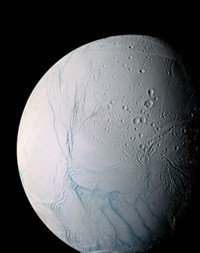Advertisement
Grab your lab coat. Let's get started
Welcome!
Welcome!
Create an account below to get 6 C&EN articles per month, receive newsletters and more - all free.
It seems this is your first time logging in online. Please enter the following information to continue.
As an ACS member you automatically get access to this site. All we need is few more details to create your reading experience.
Not you? Sign in with a different account.
Not you? Sign in with a different account.
ERROR 1
ERROR 1
ERROR 2
ERROR 2
ERROR 2
ERROR 2
ERROR 2
Password and Confirm password must match.
If you have an ACS member number, please enter it here so we can link this account to your membership. (optional)
ERROR 2
ACS values your privacy. By submitting your information, you are gaining access to C&EN and subscribing to our weekly newsletter. We use the information you provide to make your reading experience better, and we will never sell your data to third party members.
Physical Chemistry
Extrasolar Gas Discovered
Astronomers thrilled at sighting of methane on distant planet
by Elizabeth K. Wilson
March 24, 2008
| A version of this story appeared in
Volume 86, Issue 12
ON A VERY HOT, Jupiter-like planet orbiting a star 65 light years away, scientists have discovered methane—the only molecule besides water ever to be discerned on an extrasolar planet.
A single spectral absorption band in the near infrared, recorded by NASA's Hubble Space Telescope, indicates a modest 50 parts per million of methane in the atmosphere of the planet HD 189733b. Hubble data also confirm a previous discovery of water vapor there. In a testament to its sensitivity, Hubble's near-IR camera measured the planetary atmosphere's faint absorption of starlight as the planet passed in front of a star (Nature 2008, 452, 329).
"It is amazing we can detect molecules at all in the atmosphere," Sara Seager, a Carnegie Institution of Washington astronomer unaffiliated with the research team, said at a press conference announcing the results. "This is a big breakthrough," she said, noting that the astronomy community is "cautiously optimistic that the methane detection is robust."

Although organisms may produce methane in abundance, astronomers stress that life as we know it could never exist on this planet, which closely orbits its star and has an atmospheric temperature that likely hovers around 1,000 K.
With a growing host of space-based telescope options, astronomers have their eyes on even greater prizes: the atmospheres of more Earth-like planets where a detection of large amounts of methane, especially if accompanied by oxygen, would be a likely indication of life.
"This is a dress rehearsal for future searches for life on more hospitable planets," Mark R. Swain, team leader of the research group and astronomer at the NASA Jet Propulsion Laboratory in Pasadena, Calif., said at the press conference.
Seager added that the signature of methane is surprising, as scientists expected the planet's atmospheric carbon to be largely in the form of carbon monoxide. "It may have to do with a temperature gradient, or chemistry we don't understand," she said.
Astronomers have found more than 250 extrasolar planets since the first was discovered in 1995.





Join the conversation
Contact the reporter
Submit a Letter to the Editor for publication
Engage with us on Twitter